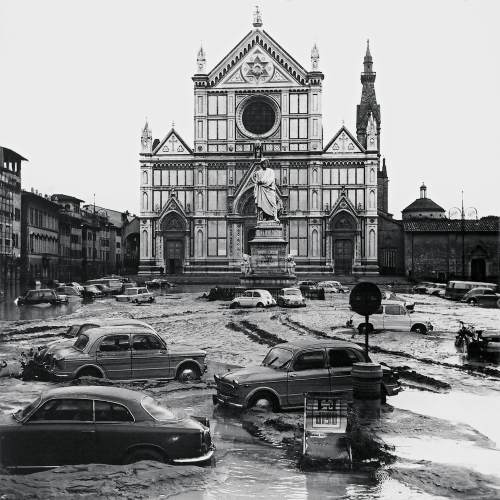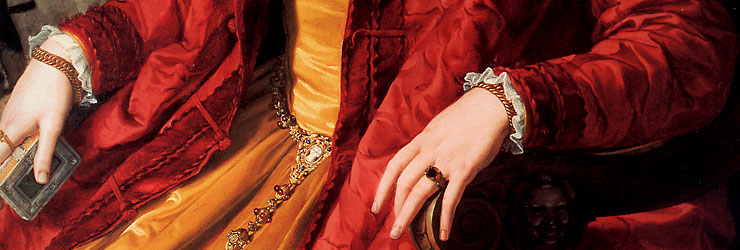
House's History
The residence, with the main entrance in 33 Corso dei Tintori, is a typical “terraced” building, built in around the XIII century together with many shops of “Wool workers” and “Dyers” that quickly crowded Santa Croce area, near the Arno river but still to the margins of the city centre of Florence.
The recent intense restoration works of the building restored numerous remains, among which dying tanks, drain and ovens, that bear witness to this first destination.
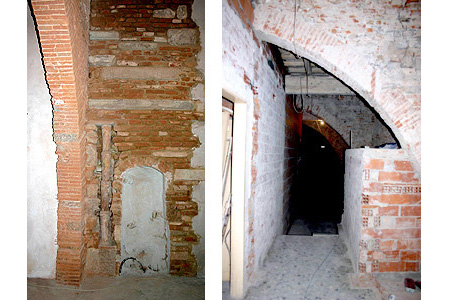
In 1236 the building of the present Ponte alle Grazie linked this extra-urban village to the city, contributing to the next development of the flourishing dyers’ activity.
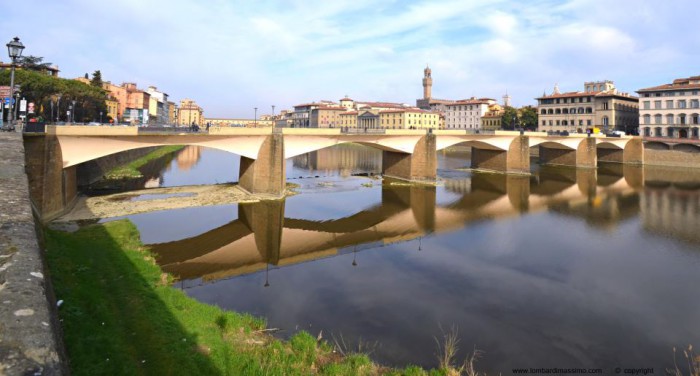
Since the XVI century, cartographical representations of the city show a progressive growth of the urban structure of the village, that slowly expanded around the important Franciscan group of Santa Croce.
From the XVII century on, the building of the first nobiliary palaces redefined the town layout of the whole area, that only at the end of the XIX century reached a layout very similar to that of the present.
In this period of time the factory of Corso Tintori was certainly widened in depth, reducing the inner areas used as courtyards and maybe putting several buildings together.

In the second half of the century the theatre was certainly the property of the Accademia degli Ingegnosi (Ingenious’ Academy) and its shows were considered the most prestigious
of the time. The theatre lived for long with different names and owners, until the half of the Nineteenth century.
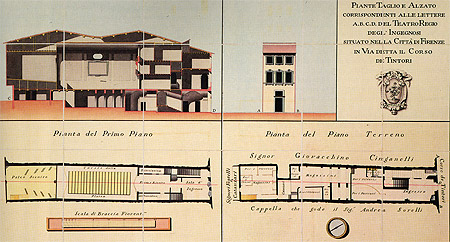
In the end of the XIX century the building became public property and the seat of the first Florence Trade Union Headquarters. Vasco Pratolini mentioned it with this name in his important literary work “the Metellus”.
Since 1921 the building was seat of the Union of Fascist Unions of Florence; a marble inscription, still evident inside, mentions this.
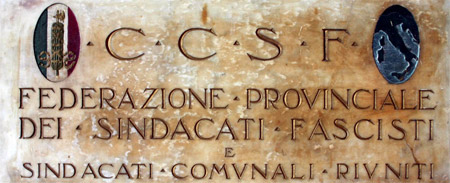
Sold by auction at the end of the Thirties, the whole palace had from then on several owners and became place of several private activities.
At the beginning of the Fifties the building was finally restored and divided into several parts.
This changed its medieval structures.
In 1966 during the flood of Florence it was greatly damaged by the flooding of the river Arno that struck the city and in particular the district of Santa Croce.
In 1968 the Ministry for Arts and Culture stated that the main façade was of great historical and architectonical importance.
